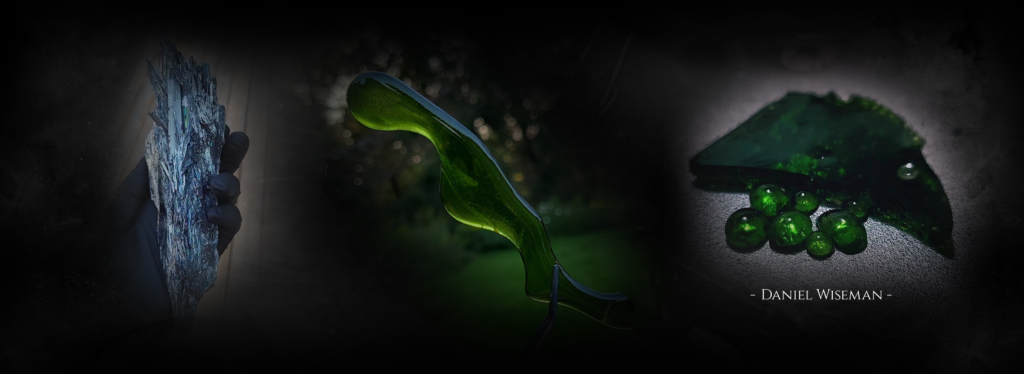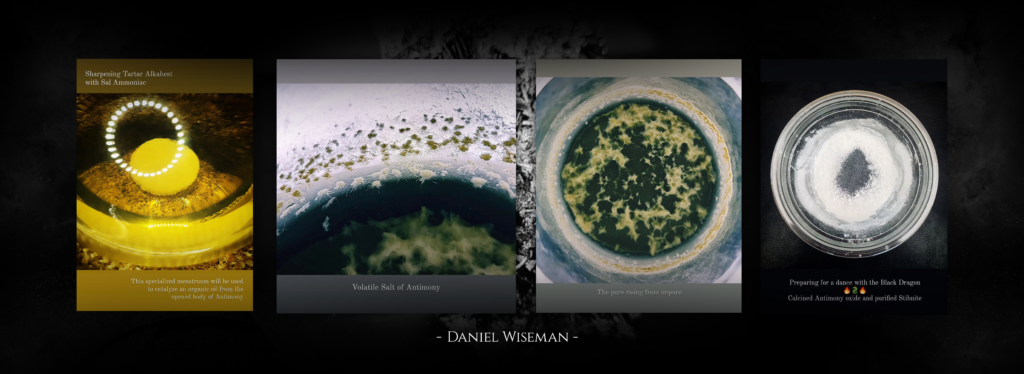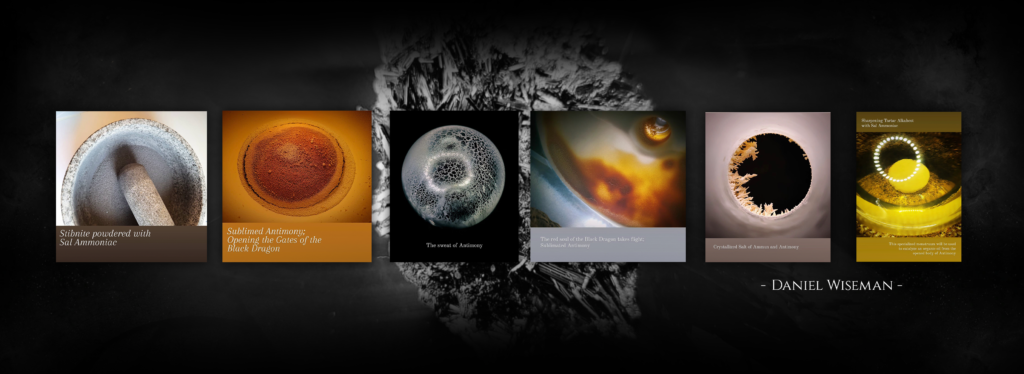Unique properties of Antimony Glass

Antimony glass, a type of glass that incorporates antimony oxide (Sb2O3) as a key ingredient, has been used for centuries in various applications, from ancient artifacts to more modern optical devices. This glass is known for its unique optical properties, particularly in how it interacts with light. The combination of antimony oxide with silica in the glass-making process results in a material that exhibits several distinct behaviors when exposed to light, making it a topic of interest in both historical and scientific studies.
The Historical Context of Antimony Glass

The use of antimony in glassmaking dates back to ancient times. Antimony was known to ancient civilizations as a mineral and was used in various forms, including as a component in cosmetics and medicines. In glassmaking, antimony was valued for its ability to enhance the clarity and brightness of glass, as well as for its role in creating vivid colors when combined with other elements.
One of the most famous uses of antimony in glass is in the creation of “Egyptian blue,” a pigment made by heating a mixture of silica, lime, copper, and antimony. This pigment was used in ancient Egyptian art and decoration, valued for its vibrant color and durability.
Optical Properties of Antimony Glass

When it comes to the optical properties of antimony glass, there are several aspects worth noting:
1) Increased Refractive Index
Antimony oxide increases the refractive index of glass, which means that light passing through the glass is bent more sharply. This property makes antimony glass particularly useful in the creation of optical lenses and prisms, where precise control over light refraction is essential.
2) Transparency and Clarity
Antimony glass is known for its exceptional clarity and transparency. The addition of antimony oxide reduces the amount of scattered light within the glass, leading to a clearer and more defined transmission of light. This property was historically valuable in creating high-quality glassware and remains important in modern optical applications.
3) Coloration Effects
Antimony can produce a range of colors in glass, depending on its concentration and the presence of other elements. For example, antimony combined with iron oxide can produce yellow or amber glass, while higher concentrations can lead to deeper, more intense hues. These coloration effects are due to the absorption of specific wavelengths of light by the antimony compounds in the glass.
4) Luminescence
Some forms of antimony glass exhibit luminescent properties when exposed to ultraviolet (UV) light. This means that the glass can emit light of a different wavelength after absorbing UV radiation, a property that can be exploited in various optical applications, including sensors and decorative lighting.
5) Reduction of Solarization
Solarization refers to the darkening or color change in glass when exposed to prolonged sunlight. Antimony oxide in glass can reduce this effect by stabilizing the glass matrix and preventing the formation of color centers that cause solarization. This makes antimony glass suitable for use in environments with high levels of UV radiation.
Applications of Antimony Glass in Modern Optics
In modern optics, the unique properties of antimony glass have been utilized in several specialized applications:

Optical Lenses
The high refractive index of antimony glass makes it ideal for use in lenses, particularly in applications where precise light focusing is required, such as in microscopes, telescopes, and camera lenses.
Optical Fibers
The clarity and reduced solarization of antimony glass make it a candidate for use in optical fibers, where maintaining signal integrity over long distances is crucial.
Decorative Glassware
The coloration effects of antimony glass continue to be valued in the production of decorative glassware, where vibrant and stable colors are desired.
UV Sensors
The luminescent properties of some antimony glasses are being explored for use in UV sensors and other devices that require detection of UV radiation.
Antimony glass represents a fascinating intersection of ancient craft and modern science. Its unique optical properties, including a high refractive index, exceptional clarity, color stability, and luminescence, have made it a valuable material in both historical artifacts and contemporary optical devices. As research into the properties of antimony glass continues, its applications may expand further, offering new insights into the behavior of light and the potential uses of this versatile material.

Antimony and Dragon Symbolism: An Alchemical Journey into Mystical Transformation

In the realms of alchemy and esoteric tradition, antimony is a substance imbued with profound symbolic significance. Known as the “Philosopher’s Stone” of the metallurgical world, antimony has long been associated with the process of spiritual transformation. Coupled with the potent imagery of the dragon, a creature often linked to power, wisdom, and the mysteries of creation, antimony takes on a dual role as both a symbol of base materiality and a catalyst for enlightenment. This article explores the intricate relationship between antimony and dragon symbolism, delving into their shared meanings in alchemical texts and their role in the quest for spiritual and material transmutation.

The Alchemist’s Wolf
Antimony has a special place in alchemical traditions. Known as *stibium* in Latin and *antimonium* in medieval texts, antimony was often referred to as the “grey wolf” by alchemists. This nickname stems from antimony’s ability to devour and purify gold, much like a wolf preying on its quarry. In this context, antimony was seen as a devourer of impurities, a powerful agent of transformation that could refine metals by eliminating their base elements.
Antimony: The Metallurgical Philosopher’s Stone
The use of antimony in alchemy was not merely practical but deeply symbolic. Alchemists believed that antimony represented the volatile and chaotic forces of nature, which needed to be tamed and refined to achieve the ultimate goal of the *Magnum Opus*—the Philosopher’s Stone, a substance believed to grant eternal life and turn base metals into gold. The process of refining antimony was symbolic of the alchemist’s own spiritual purification, where the “wild” nature of the substance had to be subdued and transmuted into something pure and holy
The alchemical process involving antimony typically began with its extraction from stibnite, a mineral form of antimony sulfide. The refinement of antimony through various stages—melting, purification, and sublimation—mirrored the alchemist’s own spiritual journey. Each stage of refinement symbolized a step towards enlightenment, with the ultimate goal being the creation of a substance that was pure, stable, and transformative.
The Dragon: A Symbol of Power and Transformation

Dragons, mythical creatures found in the folklore and mythology of cultures worldwide, are potent symbols of power, chaos, and transformation. In Western alchemy, dragons are often depicted as guardians of treasure, symbolizing the inner spiritual treasure that the alchemist seeks. The dragon represents both the dangers and the rewards of the alchemical path; it is the fierce guardian of secrets, but also a symbol of the primal forces that must be tamed and transformed.
In the context of alchemy, the dragon often symbolizes the raw, unrefined material—the prima materia—that must be subdued and purified to achieve the Philosopher’s Stone. The process of taming or slaying the dragon is emblematic of the struggle to overcome base instincts and worldly desires, transforming them into spiritual wisdom and insight.
The Union of Antimony and Dragon Symbolism
The connection between antimony and dragon symbolism is richly illustrated in alchemical texts, where the two often appear together in allegories and imagery. In these texts, antimony is sometimes referred to as the “gray wolf,” a symbol of its wild, untamed nature. The dragon, in turn, is seen as the fierce guardian of this wolf, representing the need to conquer and purify both the material substance and the self.
One of the most famous depictions of this relationship is found in the *Splendor Solis*, a 16th-century alchemical manuscript. In one of its illustrations, a green dragon is shown devouring the sun, a symbolic act representing the absorption of spiritual light by the base material. This image is often interpreted as the process by which the raw, chaotic energies of antimony (the dragon) are transmuted through the alchemical process, eventually giving birth to the purified essence of the sun—representative of the Philosopher’s Stone.
The dragon’s association with antimony also extends to the idea of death and rebirth, a central theme in alchemy. Just as the dragon must be slain or tamed, antimony must undergo a process of death and purification before it can be reborn as a noble metal. This cycle of destruction and regeneration reflects the alchemist’s own spiritual journey, where the ego is “killed” to allow the true self to emerge.
The Alchemical Marriage: Sulfur, Mercury, and Antimony
In alchemical practice, the union of sulfur and mercury is often depicted as a symbolic marriage, representing the merging of opposites—male and female, fire and water, earth and air. Antimony plays a unique role in this union, acting as a catalyst or mediator between these opposing forces.
Some alchemists believed that antimony possessed both sulfuric and mercurial qualities, making it an ideal substance for facilitating the alchemical marriage. The volatile nature of antimony allowed it to interact with both sulfur and mercury, aiding in their transformation and union. In this sense, antimony was seen as a bridge between the raw, chaotic energy of the dragon (sulfur) and the reflective, receptive nature of mercury.
Alchemical Texts and Interpretations
In Michael Maier’s *Atalanta Fugiens*, the dragon is depicted as a central symbol of the alchemical process. Maier’s emblematic engravings often show the dragon entwined with other alchemical symbols, such as the sun, moon, and ouroboros, representing the interconnectedness of these forces in the alchemist’s work.
Numerous alchemical texts reference the symbolic relationship between antimony and dragons. Basil Valentine, a 15th-century alchemist, wrote extensively on antimony in his work *The Triumphal Chariot of Antimony*. Valentine described antimony as a substance that could cure the “sick metals” and lead them to perfection, drawing parallels to the process of spiritual healing and transformation. In his allegories, the dragon often appears as a representation of the raw, untamed power of antimony, which must be harnessed and directed towards spiritual goals.
Another notable alchemical text, *The Book of Lambspring*, contains a famous image of two dragons devouring each other, symbolizing the dual nature of antimony. This image represents the dual forces of creation and destruction, which must be balanced and harmonized to achieve the alchemical Great Work. The dragons, like antimony, embody the principle of duality—the coexistence of opposites that, when reconciled, lead to the emergence of the true essence.
The Alchemist’s Journey
The interplay between antimony and dragon symbolism in alchemy reflects the broader themes of transformation, purification, and the reconciliation of opposites. Both antimony and the dragon represent powerful, chaotic forces that must be controlled and refined to achieve the alchemist’s ultimate goal—the creation of the Philosopher’s Stone and the attainment of spiritual enlightenment.
For the alchemist, working with antimony was not just a physical process but a spiritual journey. The dragon, with all its might and mystery, served as both a guide and a challenge on this path. Through the careful balance of these forces, the alchemist sought to unlock the secrets of the universe, transforming both matter and self in the process.
In modern times, the symbolism of antimony and the dragon continues to captivate those interested in the esoteric and the mystical. Whether viewed as a metaphor for personal transformation or as a historical artifact of alchemical practice, the union of these symbols offers a rich tapestry of meaning and inspiration for those who seek to explore the mysteries of existence.
The Creation and Use of Antimony Glass in Ancient Windows

Antimony has a history intertwined with the development of glassmaking in ancient times. Among its many applications, one of the most intriguing is its use in the creation of glass, particularly in ancient windows. Antimony glass, distinguished by its clarity and unique coloration, played a significant role in the advancement of glassmaking techniques, leaving an enduring legacy in the history of materials science. This article delves into the creation, properties, and historical significance of antimony glass, especially in the context of ancient windows.
The Origins of Antimony Glass
Antimony’s association with glassmaking dates back to ancient Egypt and Mesopotamia, where it was used as an additive in the production of colored glass. The earliest known use of antimony in glass dates to around 1500 BCE, during the New Kingdom period in Egypt. Craftsmen of this era discovered that antimony, when added to molten glass, could produce a range of colors, most notably a vibrant yellow and a deep purple.
1. Antimony as a Glass Colorant : Antimony compounds, particularly antimony trioxide (Sb₂O₃), were used to create colored glass. When combined with lead or calcium, antimony trioxide produced a yellow hue, while its combination with copper resulted in a deep, rich purple. These colors were highly prized for decorative objects, beads, and amulets.
2. Glassmaking Techniques : The glassmaking process in ancient times involved melting a mixture of silica (sand), an alkali (such as soda or potash), and a stabilizer (like lime or lead) at high temperatures. Antimony was added to this mixture to manipulate the color and clarity of the glass. The resulting molten glass was then shaped into vessels, beads, and, eventually, flat panes that could be used in windows.
The Use of Antimony Glass in Windows
While the primary use of antimony glass in ancient times was for decorative objects, its application in windows marks an important development in the history of architecture and glassmaking.
1. Early Windows : The use of glass in windows began in the Roman Empire, particularly during the 1st century CE. Roman glassmakers, known for their innovative techniques, used antimony to create translucent glass panes that allowed light to filter into buildings while offering protection from the elements. These early glass windows were small, typically made from individual glass panes set into lead frameworks.
2. Antimony’s Role in Window Glass : Antimony was particularly valued for its ability to produce glass with a high degree of clarity and color consistency. When added to the glass mixture, antimony acted as a fining agent, helping to remove impurities and bubbles that could cloud the glass. The result was a more transparent and aesthetically pleasing glass, which was ideal for use in windows.
3. Symbolism and Aesthetics : In ancient times, glass windows were not merely functional but also symbolic. The use of colored antimony glass in windows added an element of artistry and luxury to buildings. The vibrant colors created by antimony were often associated with wealth and status, and the presence of such windows in a structure was a sign of sophistication and refinement.
The Spread of Antimony Glass Techniques
The knowledge and techniques of using antimony in glassmaking spread from Egypt and Mesopotamia to other parts of the ancient world, including Rome and later Byzantium. As glassmaking evolved, so did the methods for incorporating antimony into the process.
1. Roman Innovations : Roman glassmakers perfected the use of antimony in the production of window glass, creating larger and more uniform panes. These advancements allowed for the construction of more elaborate and functional windows, which became a common feature in Roman public buildings, villas, and bathhouses.
2. Byzantine and Medieval Periods : The use of antimony glass continued into the Byzantine period and the Middle Ages, particularly in the production of stained glass windows for churches and cathedrals. Antimony’s role in creating vibrant yellows and purples was crucial in the design of these intricate and symbolic windows, which told biblical stories and conveyed religious messages through their colors and imagery.
3. Transmission of Knowledge : The techniques for producing antimony glass were passed down through generations of craftsmen, often guarded as trade secrets. As the knowledge spread, it influenced glassmaking in different regions, leading to the development of new styles and applications for antimony glass in architecture.
Challenges and Decline
Despite its significance, the use of antimony in glassmaking faced challenges over time. The toxicity of antimony, combined with the difficulty in sourcing and processing the metal, limited its widespread use.
1. Health Hazards : The process of working with antimony posed health risks to glassmakers, who were exposed to toxic fumes during the melting and mixing processes. The long-term exposure to antimony could lead to various health issues, including respiratory problems and skin irritations, which contributed to the decline in its use.
2. Resource Availability : Antimony was not as readily available as other glass colorants, which made it more expensive and difficult to obtain. As alternative materials and methods for coloring and clarifying glass were developed, the reliance on antimony decreased, particularly in regions where it was scarce.
3. Technological Advancements : The decline in the use of antimony glass was also due to advancements in glassmaking technology. By the late Middle Ages and the Renaissance, new techniques for producing clear and colored glass without antimony became more prevalent. These innovations led to the mass production of glass, making it more accessible and affordable for a wider range of applications.
Legacy and Modern Perspectives
Although the use of antimony in glassmaking has diminished, its legacy endures in the history of materials science and the development of glass technology. The methods pioneered by ancient glassmakers laid the foundation for modern glass production, and the aesthetic qualities of antimony glass continue to be appreciated by historians, archaeologists, and art collectors.
1. Historical Artifacts : Today, artifacts made from antimony glass, including ancient beads, vessels, and window panes, are valuable relics of the past. These objects offer insights into the technological capabilities and artistic achievements of ancient civilizations.
2. Revival of Interest : In recent years, there has been a renewed interest in traditional glassmaking techniques, including the use of antimony. Artisans and researchers alike are exploring the historical methods of producing antimony glass, seeking to recreate the colors and textures that characterized ancient glasswork.
The creation and use of antimony glass in ancient windows represent a remarkable chapter in the history of materials and craftsmanship. From its early origins in Egypt and Mesopotamia to its widespread use in Roman and Byzantine architecture, antimony glass played a pivotal role in the development of both functional and decorative glass. Its unique properties, particularly in creating vibrant colors and clear panes, made it a prized material for centuries.
While the challenges associated with antimony eventually led to its decline in glassmaking, its impact on the evolution of the craft is undeniable. The legacy of antimony glass continues to inspire and inform modern practices, reminding us of the ingenuity and creativity of ancient glassmakers.
The Unique Metallurgical Properties of Antimony and Stibnite
A Metalloid with Diverse Applications
Antimony is classified as a metalloid, possessing characteristics of both metals and non-metals. This dual nature is reflected in its properties, which include moderate electrical and thermal conductivity, resistance to corrosion, and the ability to form alloys with other metals. These properties make antimony valuable in various industrial applications.
1. Alloy Formation : One of the most significant metallurgical properties of antimony is its ability to form alloys with a wide range of metals, including lead, tin, and copper. When alloyed with lead, antimony increases hardness and mechanical strength, which is particularly useful in the production of lead-acid batteries, bullets, and other lead-based products. The addition of antimony to tin produces type metal, a material historically used in printing presses due to its durability and low melting point.
2. Flame Retardancy : Antimony compounds, particularly antimony trioxide (Sb₂O₃), are widely used as flame retardants in plastics, textiles, and electronics. When exposed to high temperatures, antimony trioxide reacts with halogenated compounds to form a protective char layer, which slows down the spread of flames. This property makes antimony a critical component in fire-resistant materials.
3. Corrosion Resistance : Antimony exhibits excellent resistance to corrosion, particularly in acidic environments. This property makes it useful in the production of alloys used in applications where resistance to chemical attack is essential, such as in the manufacture of pipes and containers for storing corrosive substances.
4. Semiconductor Properties : Antimony has semiconducting properties, making it useful in the production of diodes, infrared detectors, and other electronic components. Antimony-based semiconductors, such as indium antimonide (InSb), are valued for their high electron mobility and sensitivity to infrared radiation, which are critical for advanced electronic and optoelectronic devices.
A Metalloid with Diverse Applications

Stibnite (Sb₂S₃), the most important ore of antimony, is a sulfosalt mineral that is typically found in hydrothermal veins and hot spring deposits. It is known for its striking metallic luster and needle-like crystal formations. Stibnite has been mined for thousands of years, with historical uses ranging from the production of cosmetics to metallurgy.
1. Extraction and Refining of Antimony : The primary metallurgical process for extracting antimony from stibnite involves roasting the ore in the presence of oxygen, which converts the antimony sulfide into antimony oxide (Sb₂O₃). The oxide is then reduced using carbon or iron to produce metallic antimony. This process, known as smelting, has been used since ancient times and remains the primary method for producing antimony today.
2. Historical Uses : Stibnite’s unique properties were recognized in antiquity, particularly in ancient Egypt and Mesopotamia, where it was used to produce kohl, a cosmetic powder used to darken the eyes. The ancient Egyptians believed that kohl, made from ground stibnite, had protective properties and used it both as a cosmetic and a medicinal treatment for eye ailments.
3. Industrial Applications : In addition to its role in antimony extraction, stibnite is also used in the production of pigments, glass, and ceramics. The mineral’s ability to impart a gray to black color has made it valuable in the manufacture of colored glass and enamels. Stibnite is also occasionally used in the production of fireworks and matches due to its ability to produce bright, colorful flames when ignited.
Unique Metallurgical Properties of Antimony
The metallurgical properties of antimony are particularly notable for their versatility and utility across various industries:
1. Low Melting Point : Antimony has a relatively low melting point of 631°C (1170°F), which makes it easy to cast and alloy with other metals. This property is particularly advantageous in the production of type metal and other low-melting-point alloys used in precision casting.
2. Expansion Upon Solidification : Unlike most metals, antimony expands as it solidifies from a liquid to a solid state. This unique property, known as “anomalous expansion,” is especially beneficial in the production of castings where sharp, detailed features are required. The expansion of antimony as it cools ensures that the metal fills the mold completely, reducing the occurrence of shrinkage defects.
3. Brittleness and Hardness : Antimony is a brittle metal, which means it can be easily broken or powdered. However, when alloyed with softer metals like lead, antimony imparts significant hardness and mechanical strength to the alloy. This property is particularly important in the manufacture of battery grids, where durability and resistance to deformation are critical.
4. Antifriction Properties : Antimony is used as an additive in bearing alloys due to its antifriction properties. When combined with tin and copper, antimony forms babbitt metal, a material that provides a smooth, low-friction surface for bearings in machinery. This reduces wear and extends the life of the bearings, making it an essential component in engines and heavy machinery.
Unique Metallurgical Properties of Antimony
While antimony and stibnite possess valuable metallurgical properties, it is important to consider their environmental and health impacts. Antimony compounds can be toxic, particularly when inhaled or ingested in large quantities. Occupational exposure to antimony, especially in mining and smelting operations, can lead to respiratory and cardiovascular issues. Additionally, the improper disposal of antimony-containing products can lead to environmental contamination.
Efforts are being made to reduce the environmental impact of antimony production and use, including the development of safer extraction methods and the recycling of antimony-containing materials. Furthermore, the use of antimony trioxide as a flame retardant is being reevaluated, with researchers exploring alternative, less toxic flame retardants.
Antimony and stibnite have played pivotal roles in the history of metallurgy, contributing to the development of a wide range of industrial applications. The unique metallurgical properties of antimony, including its ability to form alloys, its low melting point, and its expansion upon solidification, make it a versatile and valuable material. Stibnite, as the primary ore of antimony, has been instrumental in the extraction and production of this important metalloid.
As technology and industry continue to evolve, the demand for antimony and its compounds remains strong, particularly in the fields of electronics, flame retardancy, and alloy production. However, it is essential to balance the benefits of antimony with a consideration of its environmental and health impacts, ensuring that its use is both safe and sustainable for future generations.
Antimony in Historical Medicine: A Tale of Toxicity and Healing
Antimony, a lustrous metalloid known for its unique properties, has played a dual role in the history of medicine—both as a healing agent and a substance of potential harm. Throughout the centuries, antimony’s medicinal applications have varied widely, from its use in ancient alchemy to its role in early modern pharmacology. While its toxic nature was recognized early on, antimony was also considered a powerful remedy for various ailments, especially when used in carefully controlled doses. This article explores the historical medicinal applications of antimony, tracing its journey from ancient remedies to its place in early modern medicine.
Ancient Beginnings: Alchemy and Antimony
The use of antimony in medicine can be traced back to the ancient civilizations of Egypt, Mesopotamia, and Greece, where it was closely associated with the practices of alchemy and early pharmacology.
1. Egypt and Mesopotamia : In ancient Egypt, antimony compounds, particularly stibnite (antimony sulfide), were used to create kohl, a black powder applied around the eyes. While primarily a cosmetic, kohl was believed to have protective and medicinal properties, shielding the eyes from the sun’s glare and preventing infections. Similarly, in Mesopotamia, stibnite was used for its perceived medicinal properties, although the specifics of its application are less documented.
2. Greece and Rome : The Greek physician Dioscorides, in his seminal work *De Materia Medica* (1st century CE), mentions the use of antimony compounds for medicinal purposes. He describes their use as a purgative and for treating skin conditions such as ulcers and sores. The Roman physician Galen (2nd century CE) also refers to antimony in his medical writings, emphasizing its purgative properties, though he warned of its potential dangers if not administered properly.
Antimony in the Medieval Period: Alchemy and Medicine
During the medieval period, antimony’s association with alchemy grew stronger. Alchemists were fascinated by antimony’s ability to change forms—an attribute they believed mirrored the transformative processes of life and healing.
1. Medieval Alchemy : Alchemists viewed antimony as a symbol of transformation and purification, much like the human body undergoing spiritual or physical healing. Paracelsus (1493–1541), a Swiss physician and alchemist, was one of the most influential figures in promoting the medicinal use of antimony. He believed that antimony, when properly purified and prepared, could be used to treat a variety of ailments, particularly those involving the digestive system.
2. Medicinal Preparations : Paracelsus popularized the use of antimony-based medicines, which he claimed could purify the body by expelling harmful substances. One such preparation was “Regulus of Antimony,” a purified form of the metal that was used to treat various conditions. Paracelsus’s influence spread throughout Europe, leading to widespread use of antimony in both alchemy and medicine.
The Early Modern Period: Antimony as a Cure-All
The early modern period saw a surge in the use of antimony in medicine, as it became a popular, albeit controversial, remedy for a wide range of ailments.
1. Antimonial Wine and Tartar Emetic : In the 16th and 17th centuries, antimonial wine and tartar emetic (potassium antimony tartrate) became popular treatments for fevers, digestive disorders, and as a general purgative. Antimonial wine was made by soaking antimony in wine, believed to imbue the liquid with medicinal properties. Tartar emetic was used to induce vomiting, thought to cleanse the body of toxins and balance the humors—a theory central to early modern medicine.
2. The Antimony Wars : The widespread use of antimony in medicine was not without controversy. In the 17th century, a heated debate known as the “Antimony Wars” erupted between physicians in Paris. One faction, led by proponents of Paracelsian medicine, argued for the therapeutic use of antimony, while another faction condemned its use, citing its toxic effects. The dispute culminated in the official acceptance of antimony as a legitimate medicinal substance by the Paris Faculty of Medicine in 1666, after successful trials demonstrated its efficacy in treating fever.
3. Antimony Pills : Perhaps the most infamous use of antimony in medicine was the “everlasting pill.” These pills, made of metallic antimony, were swallowed to induce vomiting and purging. After passing through the digestive system, the pill was retrieved, cleaned, and reused—hence the name “everlasting.” Despite their popularity, the use of antimony pills was dangerous due to the risk of heavy metal poisoning.
Later Applications and Decline in Use
As medical science advanced in the 18th and 19th centuries, the use of antimony in medicine began to decline, largely due to growing awareness of its toxicity and the development of safer alternatives.
1. Antimony in 18th and 19th Century Medicine : Despite its known risks, antimony continued to be used in the 18th and 19th centuries, particularly in the treatment of fevers and as a component of “plummer’s pills,” which were used to treat venereal diseases. However, the emergence of new medical theories and the development of more effective drugs, such as quinine for malaria, gradually reduced the reliance on antimony.
2. The Decline of Antimony in Medicine : By the late 19th century, the use of antimony in medicine had largely fallen out of favor. The rise of scientific medicine and the understanding of toxicology led to a reevaluation of antimony’s role in therapeutics. The discovery of its toxic effects on the liver, heart, and other organs further contributed to its decline.
Legacy and Modern Perspectives
Although antimony is no longer widely used in medicine, its historical applications provide valuable insights into the evolution of medical practices and the balance between benefit and risk in the use of toxic substances for therapeutic purposes.
1. Modern Uses of Antimony Compounds : Today, antimony compounds are still used in certain medical applications, albeit in a more controlled and limited manner. For example, antimony-based drugs, such as meglumine antimoniate and sodium stibogluconate, are used to treat leishmaniasis, a parasitic disease prevalent in tropical regions. These compounds are carefully administered under medical supervision due to their potential side effects.
2. The Cautionary Tale of Antimony : The history of antimony in medicine serves as a cautionary tale about the use of toxic substances in therapeutic contexts. It highlights the importance of rigorous scientific evaluation and the need for caution in the use of substances that can be both healing and harmful.
The story of antimony in medicine is one of paradox—its dual nature as both a healer and a poison reflects the complex relationship between early medical practices and the substances they employed. From ancient alchemical traditions to the controversial debates of the early modern period, antimony’s role in medicine has evolved in response to changing medical theories and a growing understanding of its risks and benefits.
Today, while antimony’s medicinal use is limited, its historical significance remains a testament to the enduring quest for remedies that balance efficacy with safety. The lessons learned from antimony’s medicinal past continue to inform modern medical practices, reminding us of the fine line between cure and poison.
